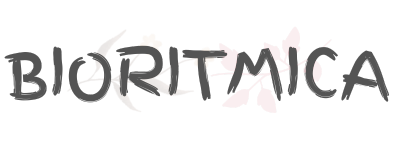Styles
Techniques
and
Ancient Hawaiian “Lomi Lomi Nui”: ‘The Temple Style’
A ceremony, a dance, a sacred moment of contact with your body and with the elements of nature present in you for healing. Original of the native peoples from Hawaii, this particular style has been performed by the ‘Hunas’ – shamans – for centuries.
It is a more ‘Wellness’ style. The tensions in the body are address holistically. The whole body is treated at the same time, it promotes the feeling of connection between the sore parts of the body and a sense of energy flow where it is blocked. It helps become conscious of the overall tensions and release them through a constant touch.
The masseur usually uses his forearms to cover wider muscle surfaces and the body of the patient is shaken with the constant dance flow of the ‘Hula Hula’: emulating the natural phenomena: water waves, earthquakes, hurricanes, volcanic eruptions, etc. The body and the soul recover the sense of moving if its stuck; of stillness if its shocked; of change and permanence to re-adapt.
This massage has a rhythm, as the movements follow the relaxing music that is being played, combining speed, intensity and quietness.
If you are a ‘spiritual’ seeking person, this style helps you to find a conscious spiritual connection through your body.
My massage treatment usually start off with 7 min “Cat Walk” Tai technique to stimulate the grounding; and then 7 min pure Lomi Lomi Nui. The rest 40 usually address Deep Tissue with Californian Style, to finish with 5 min Lomi to round up with a sense of light movement.
The following Massage styles are all combined in a single session. You can ask to apply more of one or the other as you prefer.Usually, costumers demand either DEEP TISSUE or WELLNESS. In any case, these techniques can be applied with any of the styles described below. You will find a detailed description as well as an illustrative video along with it.
Californian ‘ESALEM’ Style
This massage was developed in the ESALEM Research Institute back in the 70s and was inspired by the Hawaiian Lomi Lomi. This style has a more neuro-physiological and somatic approach to the treatment of chronic pain.
It is based in the reseaches unfolded by the Polyvagal theory of Stephen Porges, this massage stimulates the ‘parasympathetic’ response of the nervous system, allowing the biological mechanisms of restoring the tissues that are damaged.
If you seek for a more Deep Tissue treatment, this massage stands out to help you address the very root of tension and pain in the muscles. The pressure is constant and intense, and at the same time the ‘touch’ is conscious, sensitive and careful. You will feel the pain releases without aggression. When you mind-work slows down, your body activates the mechanisms of reparation. Pain is released by feeling it deeply but still in a very cautious way. You decide how deeply you want to experience it.
It may also unleash emotional memories that are linked to pain and in the long run, this therapy can help you become aware of the psico-somatic patterns that causes chronic pain.
At a physiological level, this massage can helps reduce symptoms related to chronic stress or depression, stimulated a better sleep, digestion, breath, This massage brings you to you homeostasis: recover your phisiological balance after a stressful situation.
Ayurvedic Style
This massage belongs to the ancient Indian medicine Ayurveda. Based in the Dosha theory, this perspective conceives each individual has a specific bio-type, a natural constituency (‘Pikruti’) of the elements (Pita, Vata, Kapha) that involve all of the aspects of life: mind, body, routines, feelings. A symptom in any of these implies an unbalance (‘Vikruti’) caused by an excesses of one of those elements in any aspect of their life. Health is then a dynamic concept. The balance is recovered through incorporating more of the element that is in lack.
The massage techniques applied in this medicine stimulates the specific element that the individual is needing to recover.
I is usually performed on the floor, and the touch, the oils, the aromatherapy and the sound that is applied along the session are coherent to stimulate the elements that the individual needs in a multi-level aspect.
In my treatment I include this knowledge as a complementary approach to treat fiscal discomfort not only by addressing its symptoms but also providing the patient with alternative tools to become aware of the multilevel causes underlying.
This techniques are usually included in the treatment by request.
You can find a link in ‘Resources’ to make a quick test to identify your Dosha.
